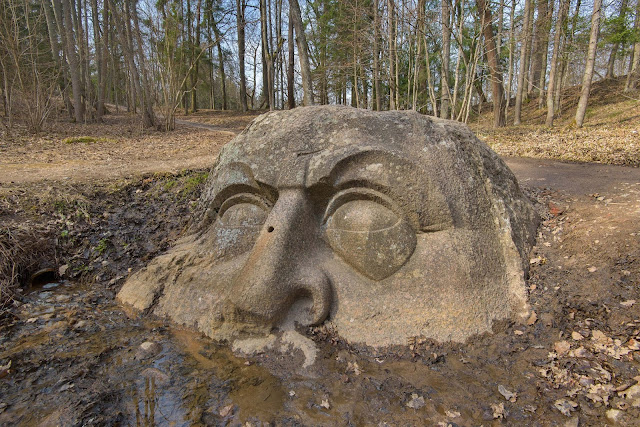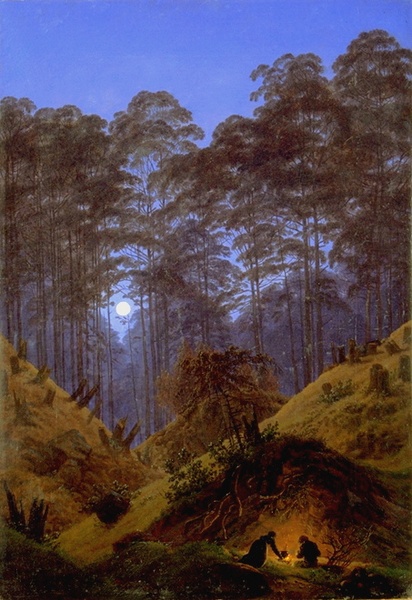Dyson Logos Jam - The Barrows Hunger
The Museum - “Viridian Hills Tumulus Museum and Archive.” Signs directing travelers to the museum are posted incessantly on every road in the area (“Only 200 leagues away!” “The Lord Duke’s favorite attraction!” “Oops! You just missed it!”) It’s essentially just one room in a tumbledown shack, about half a day from the nearest village. A few dusty clay and stone carved idols, and a handful of heavy, oblong gold coins of ancient mint. Lots of cheap souvenirs and tchotchkes with the Museum name emblazoned on them for sale- mugs and tankards, belts, sword scabbards, cheaply made spellbooks, etc.
Filbert Donovan - Bookish and slight, younger than you anticipate. Passionate about the “history” of The Barrows (or what he insists on calling the Lernaean Tumuli). However, sometimes his historical info dumps are contradictory, a fact which he waves off. “There are always conflicting accounts in the historical record!”
He’s part of an order that worships the hydra, The Ecstatic Collective of Nine. He has a holy symbol always around his neck, a heavy pendant showing nine twisting lines leading down to the heart of the earth to a starburst at the base. He’s here to protect the three still-living heads of the Hydra, and send food their way (one of those has actually just recently died but he’s not aware yet).
The Barrows - The Monarchs of Lernaea do not and never did exist. There was never such a place as Lernaea, in fact. The barrows are the camouflaged heads of an ancient behemoth that lives buried beneath the ground, the faux-grecian decorations and relics contained within them the naturally generated bait-plumage of a primordial predator. Everything is made out of a flaky, clay-like substance formed from the hydra’s saliva, some of it camouflaged with a thin layer of natural pigment resembling silver or gold or painted stone. In the dead heads there are several “relics” that have been hand-fashioned by Filbert and his predecessors to lure tomb-robbers and adventurers into the inert barrows in hopes of somehow tempting them back to life.
- The Lawmaker, Grandfather to Us All
- Within the Museum - Little known about the founder of the nation. He is said to have laid down the fundamental system of law that allowed Lernaea to flourish, and lived to an advanced age.
- The Reveler, Bringer of Joy
- Within the Museum - The Reveler ruled during a time of plenty in Lernaea’s infancy. He won the hearts of the people with grand games, spectacles, and festivals.
- The Learned, of Divine Intellect
- Within the Museum - Sudden advancements in several fields of magic characterized the Learned’s rule, seemingly from nowhere. It has been suggested by both period and contemporary scholars that they may have made a deal with an extraplanar entity to pave the way for this golden age.
- The Despised, Despoiler of the Nation (See Below)
- Within the Museum - Corruption characterized the Despised’s rule. Public funds were diverted to her friends and admirers. Lands and their inhabitants were given away freely to rival kingdoms in exchange for gifts and petty favors. Only vicious crackdowns on dissent prevented a full-scale revolt in her lifetime.
- Information on the Despised is pasted over write-ups on the original faux-monarch in this barrow, The Child-Queen.
- The Conqueror, Battle-Mighty
- Within the Museum - Economic stagnation was answered by the Conqueror-Queen’s unending foreign campaigns, leading to a boom in land and wealth and the decimation of Lernaea’s youth. The latter symptom was largely ignored, and the Conqueror was a celebrated figure in her time and for generations after her death.
- The Gentle, Beloved but Weak
- Within the Museum - The Gentle pursued policies of appeasement with neighboring kingdoms, including those on the losing side of exchanges with his predecessor. He was named a peace-keeper and a coward, in turn.
- The Cultured, Patron of Arts
- Within the Museum - A flourishing of the arts, written and visual and performing. It was said the Cultured was in fact a philistine, merely trying to cultivate an air of sophistication, but the material result was a great renaissance of poetry and music whatever their intent.
- The Merchant, Bringer of Wealth
- Within the Museum - A faltering of the bloodline, the Merchant was a bastard child from a lesser wing of the royal family. Still, his expert understanding of trade and taxation brought a boom of wealth in the declining years of the nation...for the ruling class, at least.
- The Cursed, The Last of Her Line
- Within the Museum - A great famine, followed by earthquakes and other natural disasters brought the house of Lernaea to an end. It was said the gods took issue with the reverence of the monarchs as quasi-divinities themselves, and saw to it that they fell. The Cursed ruled for only a short time before she was put to the sword by her own disgruntled subjects as the nation sank into anarchy.
- The top is sheared off at an angle, leaving the interior partially exposed.
- A wizard was exploring the barrow sometime in the last decade, was about to be swallowed as the head emerged from the earth and shut its mouth. Thinking fast, she poured all of her spells into her wand, the magical energy overloading the focus and causing an explosion of energy. She was killed instantly, but the head was lopped off at the throat. The half-dead head now regurgitates “treasures” from the grooves at the back of its throat irregularly.
- Another low mound lies nearby, oblong - it’s hard to tell if it’s another barrow or just a quirk of topology, but there’s no visible entrance.
- The decomposed head, of course
- Inside, a pillar juts up, just barely supporting the remaining earth above. The pillar is worn away in odd patterns, leaving it looking oddly like an enormous vertebrae.
- Funny, that
- The walls are not decorated, and seem strangely decayed, almost melting.
- In the back, three tall niches in the wall are overflowing with statuettes and relief sculptures. The few that seem to glitter with precious ore or gems prove to be fakes, some sort of leaf or paint covering only part of their surface. There is a common theme to the objects - all of the figures portrayed in them, humanoid or otherwise, are all missing their heads. Some look to have been carved to appear decapitated, some look as if their heads have been broken off after completion
- Magic item: A large sack-cloth doll with its head and all limbs missing. If a limb or head is fashioned out of a scrap of clothing, the owner of that garment will grow the same appendage back overnight. If all limbs and head are restored to the doll, it will animate and hunt down those who it has restored, taking back the appendages they regrew and attaching them to itself.
- Magic-user's spellbook, thoroughly charred with only a couple of spells still legible. When casting a spell learned from this book, the caster spouts thick black smoke from their nostrils and ears.
- 2d6 ebony slivers of a ruined wand. They're still charged with magical energy, and explode when thrown like powerful firecrackers.





Comments
Post a Comment